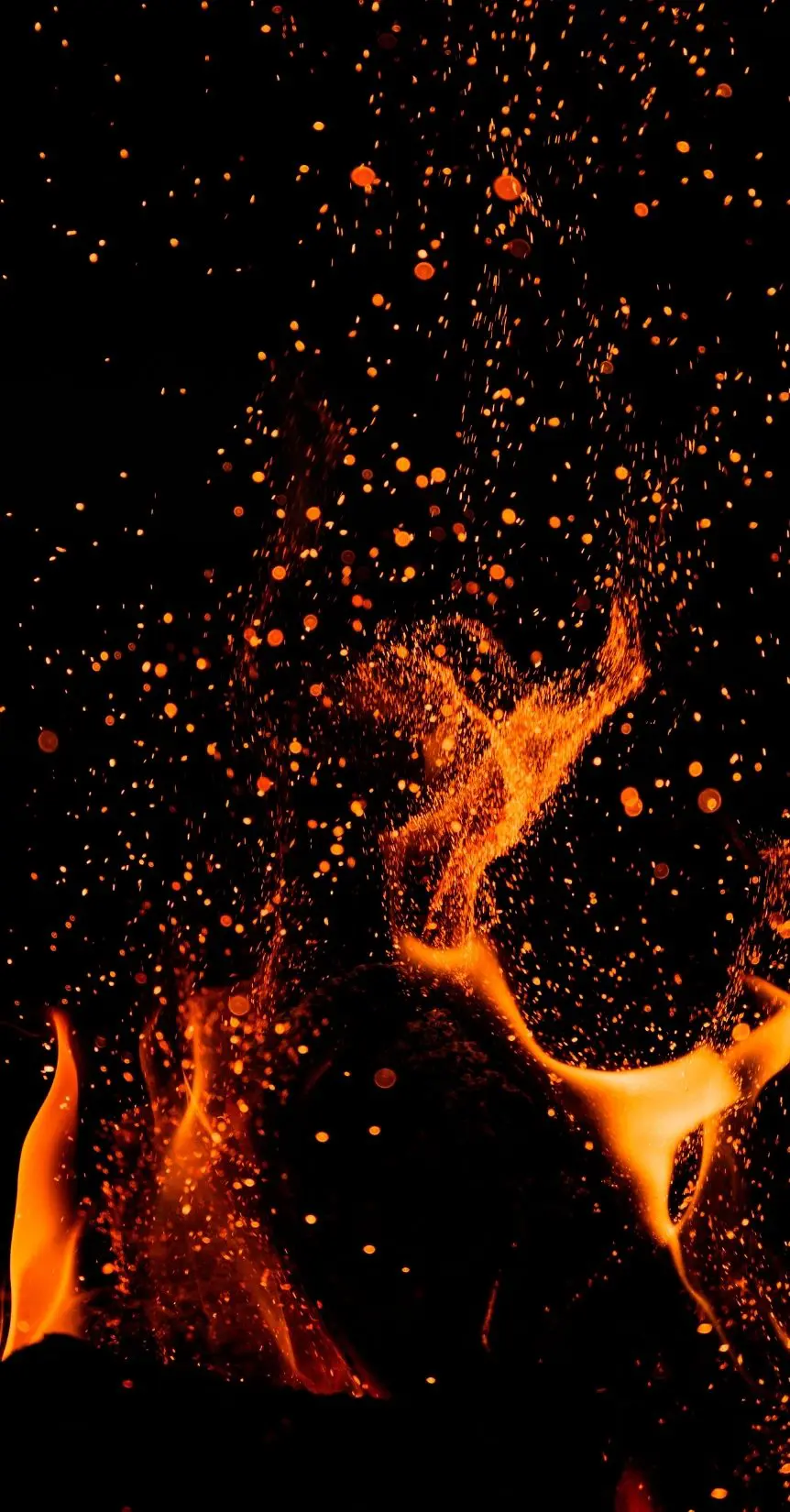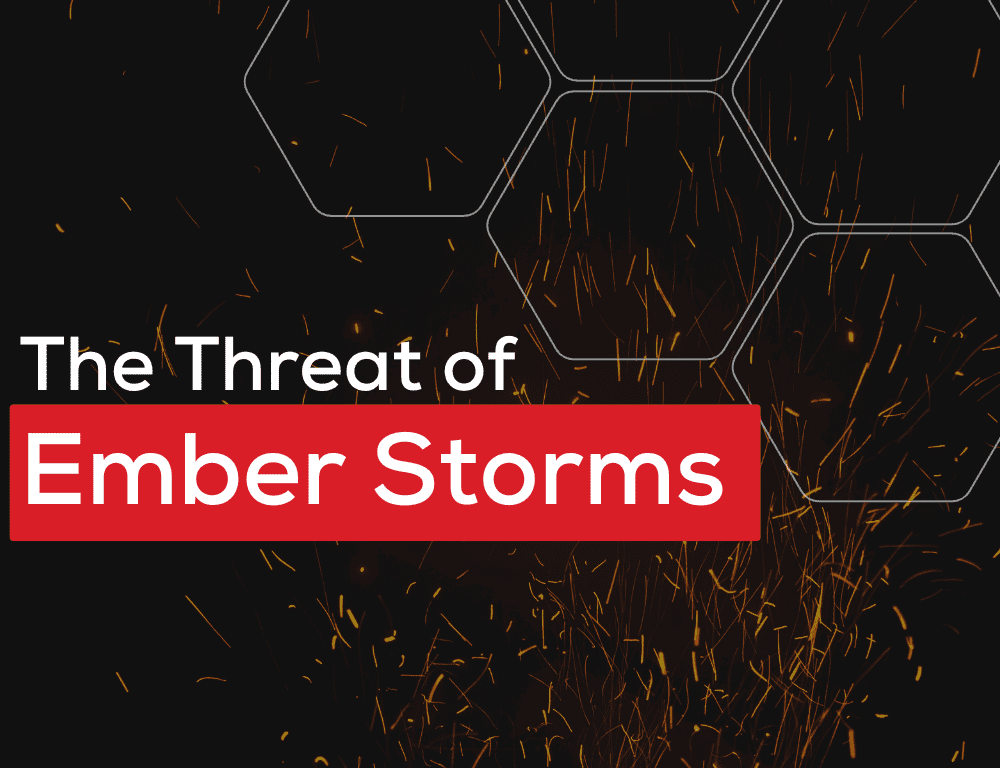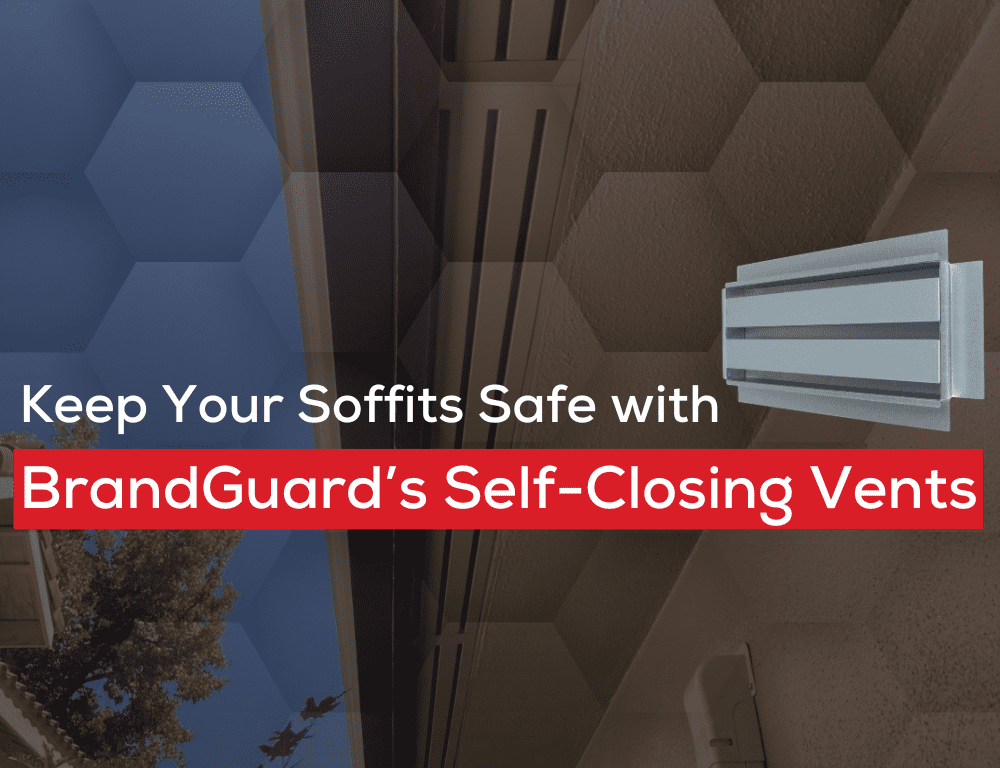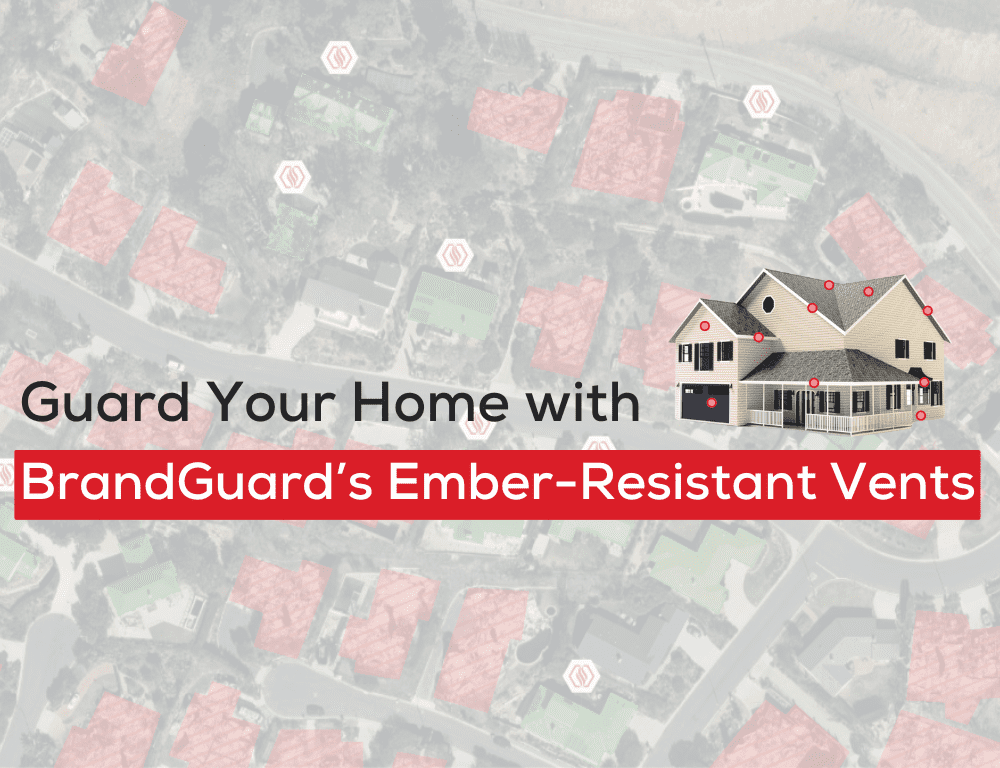Blogs & News
The Threat of Ember Storms.
Uncover and understand the leading threat of home safety in WUI zones – wind-blown embers, the number one cause of home ignitions.
Countless acres burned. Family homes destroyed. Communities lying in ruin. Known for its destruction and inability to be contained easily, wildfires have become one of the most feared natural disasters in the United States.
Often, thought to be limited to California, wildfires are now appearing more frequently throughout the US, such as Colorado and Washington State. This growing problem can be associated with communities developing on Wildland-Urban Interfaces (WUIs), a prime location for wildfires to ignite.
In combination with developing in WUI zones, climate change has also affected the frequency and intensity of wildfires. With prolonged drier and hotter seasons, states, such as California, who are familiar with wildfires are seeing a huge uptick in volume and destruction.
Even though, climate change and residency in WUIs are some of the main reasons for the spike in wildfire frequency – they are not the reason why more homes are igniting. This is where we introduce the common home intruder during wildfires, wind-blown embers.
How Embers Affect Residential Spaces
In the event of a wildfire, thousands to millions of hot embers are produced. Accelerated by high wind speeds, these embers can accelerate up to five miles ahead of the fire’s main front. With this rapid acceleration, these embers can appear before flames are even at your home’s doorstep.
Upon contact, these embers can ignite any flammable material, whether this be nearby vegetation or your home’s exterior structure. However, embers also have the ability to gain access to the interior of your home.
Used to intake breathable air into your home, air ventilation systems can filter in unwanted gusts, such as wind-blown embers. When embers enter an air ventilation system, the flow of circulation allows embers to enter unoccupied spaces in your home, such as attics and crawl spaces.
Therefore, these embers are able to ignite any flammable material, whether it be insulation or other stored materials, and accelerate rapidly throughout one’s home.


How Are Homeowners Protecting Their Homes & Family from Embers?
So, the question is, “How are homeowners protecting themselves from wind-blown embers from entering their homes?” In response to being known for its wildfire-prone terrain, California building code officials have implemented countless building codes to ensure their communities stay safe from this threat.
Chapter 7A of the California Building Code now requires all ventilation openings for enclosed attics, soffit spaces, rafter spaces, and other openings to be covered with a WUI vent approved and listed by the California State Fire Marshal. As previously mentioned, wildfires are not only reappearing in California, but in various regions throughout the US.
The reality is many of these regions have yet to fully adapt their local building codes to California’s level of wildfire defense codes. However, this does not mean your home doesn’t need a tested and approved ember-resistant ventilation system.
If you reside within a high-risk wildfire area or Wildland Urban Interface, you cannot afford to wait. Installing a tested and certified ember-resistant ventilation can greatly better your home’s odds of halting the intrusion and ignition of traveling ember storms.
BrandGuard Vents vs. Wind-Blown Embers
When selecting your home’s ember-resistant vents, there’s a few important factors to consider when making your selection. Now, let’s work through this decision process together.
Protection from Wildfire Elements
In addition to the demand of keeping out embers; it is also critical not to neglect keeping out other wildfire elements. Designed with a three-layer wildfire defense technology, BrandGuard’s Ember-Resistant Vents keep out more than just embers.
With our overlapping baffle design and 1/16” fine mesh layer, our vents can initially keep out wind-blown embers – however, our layer of intumescent technology is where the real wildfire protection lays. With its ability to be activated by extreme high temperatures, our self-closing intumescent technology, engineered by Tenmat, rapidly expands to block embers, flames, high temperatures, and smoke from penetrating the household.
Meeting Your Home’s Aesthetics
When choosing your ember-resistant vents, it’s critical to ensure that these vents can meet the aesthetics of your current household. Whether it be the vent’s color, material, or even its shape, BrandGuard’s Ember-Resistant Vents can easily be integrated into any new home’s architectural design. Additionally, our Ember-Resistant Vents can easily be retrofitted into existing vent cutouts – an added plus for already built homes.
Creating Peace of Mind
As we reach the final stage of identifying which ember-resistant vents you will be installing in your household, it’s important to address longevity. In terms of wildfire defense, choosing a solution that can uphold the same standards of fire protection, regardless of time or weather conditions, is ideal. Unlike, other forms of intumescents, our intumescent strips have been age-tested to last up to 60 years – allowing homeowners for a prolonged period of peace of mind with long-lasting fire protection.


Moving Forward
As wildfires continue to surge across the United States – driven by climate change and expanding developing in WUI zones – the threat of wind-blown embers has grown exponentially. With the combination of wildfire frequency and its ability to travel great distances, ember storms are causing more destruction – especially in regions which don’t address wildfire defense.
While California has taken proactive measures through Chapter 7A, many states remain vulnerable due to the lack of standardized home hardening measures. However, builders and homeowners don’t need to wait for legislation to act. By installing ember- and flame-resistant vents, such as BrandGuard Vents, families can significantly reduce the risk of ember intrusion and ignition.
From self-activated intumescent technology to seamless architectural integration and age-testing, BrandGuard’s Ember-Resistant Vents offer more than protection – they offer peace of mind.
In the face of growing wildfire threats, the time to act is now. Protect your home. Protect your family. Build Back Better with BrandGuard Vents.
Related Posts
-

Uncover and understand the leading threat of home safety in WUI zones – wind-blown embers, the number one cause of…
-

Discover how you can harden your home’sstandard and continuous soffit ventsfrom wind-blown embers, hightemperatures, and flames. Often, homeowners only see…
-

Explore how homeowners who reside in WUI zones can protect themselves, their families, and their homes from the destruction of…
